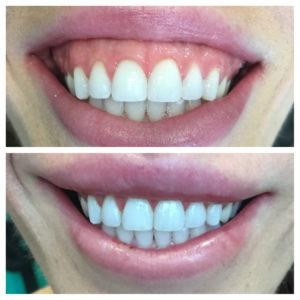
Lip repositioning surgery is an increasingly popular cosmetic procedure designed to reduce excessive gum display, commonly known as a gummy smile. By altering the position of the upper lip, this surgery helps achieve a more balanced and aesthetically pleasing smile. Here’s a comprehensive, step-by-step guide to understanding the lip repositioning surgery process.
Step 1: Initial Consultation
The journey begins with an initial consultation with a board-certified cosmetic surgeon or a periodontist who specializes in this procedure. During this consultation, the surgeon will:
- Evaluate Your Smile: The surgeon will examine your smile to determine the extent of gum exposure and identify the underlying cause of the gummy smile, whether it’s due to a hyperactive upper lip, excessive gum tissue, or other factors.
- Discuss Goals: You’ll discuss your aesthetic goals and expectations from the surgery.
- Medical History: The surgeon will take a detailed medical history to ensure you’re a suitable candidate for the procedure. This includes checking for any underlying health issues or medications that might affect the surgery or healing process.
- Treatment Plan: Based on the evaluation, the surgeon will outline a personalized treatment plan and explain the details of the procedure, including the risks, benefits, and expected outcomes.
Step 2: Pre-Surgical Preparation
Once you decide to proceed with the surgery, pre-surgical preparations begin:
- Instructions: You’ll receive detailed pre-operative instructions, which may include guidelines on eating, drinking, and medications to avoid prior to surgery.
- Consent Forms: You’ll need to sign consent forms acknowledging that you understand the procedure, its risks, and potential complications.
- Pre-Surgical Photos: The surgeon may take photos of your smile for comparison with post-surgical results.
Step 3: The Day of Surgery
On the day of the surgery, the following steps are typically followed:
- Anesthesia: The procedure is usually performed under local anesthesia to numb the treatment area. In some cases, mild sedation may be used to help you relax.
- Marking the Incision Sites: The surgeon will mark the inside of your upper lip where the incisions will be made. These markings serve as a guide for the precise repositioning of the lip.
Step 4: The Surgical Procedure
The actual surgery involves several critical steps:
- Incisions: The surgeon makes two small incisions on the inside of the upper lip. These incisions are strategically placed to access the muscles and tissues that need to be adjusted.
- Muscle Adjustment: The levator labii superioris muscle, which controls the upper lip’s movement, is detached and repositioned. By adjusting the attachment point of this muscle, the upper lip is lowered to cover more of the gums.
- Suturing: The incisions are then closed with dissolvable stitches. These stitches will gradually dissolve over a few weeks, eliminating the need for removal.
Step 5: Post-Surgical Care
After the surgery, proper care is essential to ensure smooth healing and optimal results:
- Immediate Recovery: You’ll spend some time in a recovery area where medical staff will monitor you for any immediate reactions to the anesthesia.
- Pain Management: You’ll be prescribed pain medications to manage any discomfort. Cold compresses can also help reduce swelling and bruising.
- Dietary Restrictions: A soft or liquid diet is often recommended for the first few days to avoid putting strain on the surgical site.
- Oral Hygiene: Maintaining good oral hygiene is crucial to prevent infection. You may be advised to use a gentle mouth rinse and avoid brushing the surgical area for a few days.
Step 6: Follow-Up Appointments
Follow-up appointments with your surgeon are essential to monitor your healing progress and ensure the best results:
- First Follow-Up: The first follow-up visit is usually scheduled within a week after the surgery. The surgeon will check the healing of the incision sites and address any concerns you may have.
- Additional Visits: Additional follow-up visits may be scheduled over the next few weeks to months to ensure proper healing and satisfactory outcomes.
Step 7: Long-Term Results
The long-term results of lip repositioning surgery are generally very positive, with most patients experiencing a significant improvement in their smile aesthetics:
- Healing Time: Full healing typically occurs within a few weeks, although the final results may take a few months to fully manifest as swelling subsides and tissues settle.
- Satisfaction: Patients often report high satisfaction with the results, noting a more balanced smile and increased self-confidence.
Conclusion
Lip repositioning in the Colony is a relatively straightforward procedure that can have a profound impact on your smile and self-confidence. By understanding the step-by-step process—from the initial consultation and pre-surgical preparation to the surgical procedure and post-operative care—you can make an informed decision and approach the surgery with confidence. As always, choosing a qualified and experienced surgeon is key to achieving the best possible outcomes.
